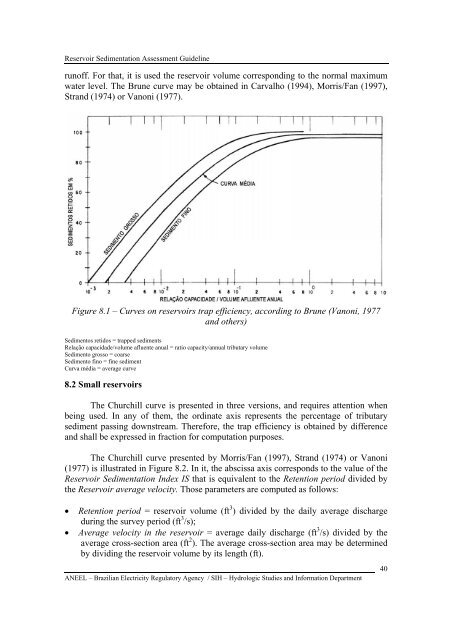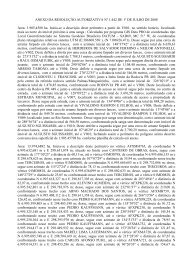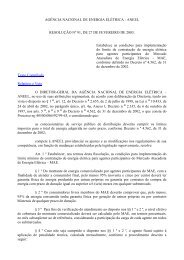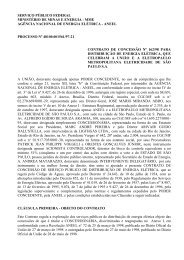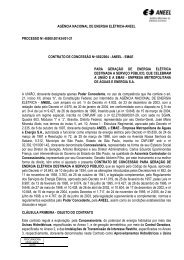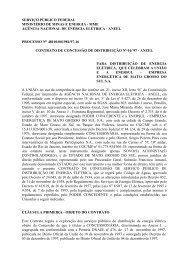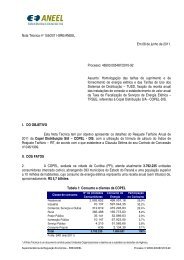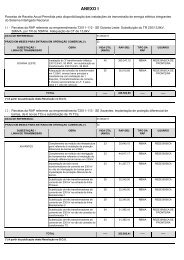RESERVOIR SEDIMENTATION ASSESSMENT GUIDELINE - Aneel
RESERVOIR SEDIMENTATION ASSESSMENT GUIDELINE - Aneel
RESERVOIR SEDIMENTATION ASSESSMENT GUIDELINE - Aneel
You also want an ePaper? Increase the reach of your titles
YUMPU automatically turns print PDFs into web optimized ePapers that Google loves.
Reservoir Sedimentation Assessment Guidelinerunoff. For that, it is used the reservoir volume corresponding to the normal maximumwater level. The Brune curve may be obtained in Carvalho (1994), Morris/Fan (1997),Strand (1974) or Vanoni (1977).Figure 8.1 – Curves on reservoirs trap efficiency, according to Brune (Vanoni, 1977and others)Sedimentos retidos = trapped sedimentsRelação capacidade/volume afluente anual = ratio capacity/annual tributary volumeSedimento grosso = coarseSedimento fino = fine sedimentCurva média = average curve8.2 Small reservoirsThe Churchill curve is presented in three versions, and requires attention whenbeing used. In any of them, the ordinate axis represents the percentage of tributarysediment passing downstream. Therefore, the trap efficiency is obtained by differenceand shall be expressed in fraction for computation purposes.The Churchill curve presented by Morris/Fan (1997), Strand (1974) or Vanoni(1977) is illustrated in Figure 8.2. In it, the abscissa axis corresponds to the value of theReservoir Sedimentation Index IS that is equivalent to the Retention period divided bythe Reservoir average velocity. Those parameters are computed as follows:• Retention period = reservoir volume (ft 3 ) divided by the daily average dischargeduring the survey period (ft 3 /s);• Average velocity in the reservoir = average daily discharge (ft 3 /s) divided by theaverage cross-section area (ft 2 ). The average cross-section area may be determinedby dividing the reservoir volume by its length (ft).ANEEL – Brazilian Electricity Regulatory Agency / SIH – Hydrologic Studies and Information Department40


